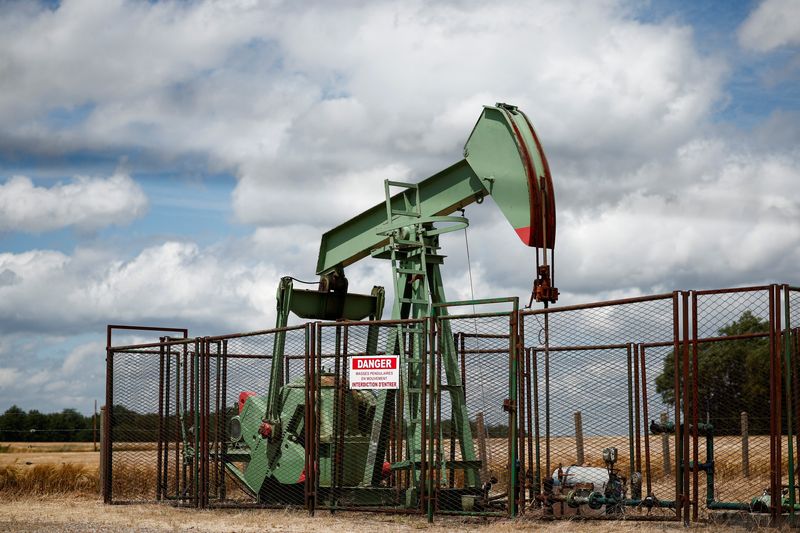Oil prices ease as weak economic data offsets higher US winter storm heating demand
By Scott DiSavino
NEW YORK (Reuters) -Oil prices eased in volatile trade on Monday as some bearish economic news from the United States and Germany offset bullish support from a weaker U.S. dollar and forecasts for increased heating demand for energy from a winter storm.
After rising for five days in a row, Brent futures fell 21 cents, or 0.3%, to settle at $76.30 a barrel, while U.S. West Texas Intermediate (WTI) crude fell 40 cents, or 0.5%, to settle at $73.56.
Despite those declines, both crude benchmarks remained in technically overbought territory for a third day in a row.
On Friday, Brent settled at its highest level since Oct. 14 and WTI closed at its highest since Oct. 11 due in part on expectations of more fiscal stimulus to revitalise China's faltering economy.
With interest in energy trade growing in recent weeks, open interest in WTI futures on the New York Mercantile Exchange soared to 1.933 million contracts on Friday, the most since June 2023.
"Oil markets have entered 2025 with balanced supply-and-demand fundamentals, but with prices being propped up by enduring geopolitical tensions," analysts at Eurasia Group, a consultancy, said in a report.
"As the year progresses, oil markets will probably continue to experience low demand growth that may be outpaced by new supply, especially from the U.S. and likely OPEC as well," Eurasia Group said.
In the United States, the world's biggest economy, new orders for manufactured goods fell in November amid weakness in demand for commercial aircraft while business spending on equipment appeared to have slowed in the fourth quarter, according to data from the Commerce Department's Census Bureau.
In Germany, Europe's biggest economy, annual inflation rose more than forecast in December due to higher food prices and a smaller drop in energy prices than in previous months.
To combat higher inflation, central banks often boost interest rates, which can slow economic growth and demand for energy.
CRUDE PRICES WERE UP
Earlier in the day, crude prices were up as a winter storm marches across the United States, causing prices for natural gas , a heating fuel, to spike 10% on Monday, while diesel futures closed at their highest level since Oct. 7. [NGA/]
Crude prices also gained ground earlier in the session on a 1.1% slump in the U.S. dollar against a basket of other currencies following a newspaper report that President-elect Donald Trump was mulling tariffs that would only be applied to critical imports, potentially a relief for countries that were expecting broader levies.
The dollar, however, pared much of that decline after Trump denied the newspaper report.
A weaker U.S. currency makes dollar-priced commodities like oil cheaper for buyers using other currencies.
In China, the world's second-biggest economy, the yuan ended the domestic session at its weakest level in 16 months against the U.S. dollar, weighed down by trade concerns.
In a sign of firmer demand expectations, Saudi Aramco (TADAWUL:2222 ), the world's top oil exporter, raised crude prices for Asian buyers in February for the first time in three months.
Sudan, meanwhile, lifted a nearly year-long force majeure on the transport of crude oil from its neighbour South Sudan to a port on the Red Sea after security conditions improved.
Source: Investing.com
